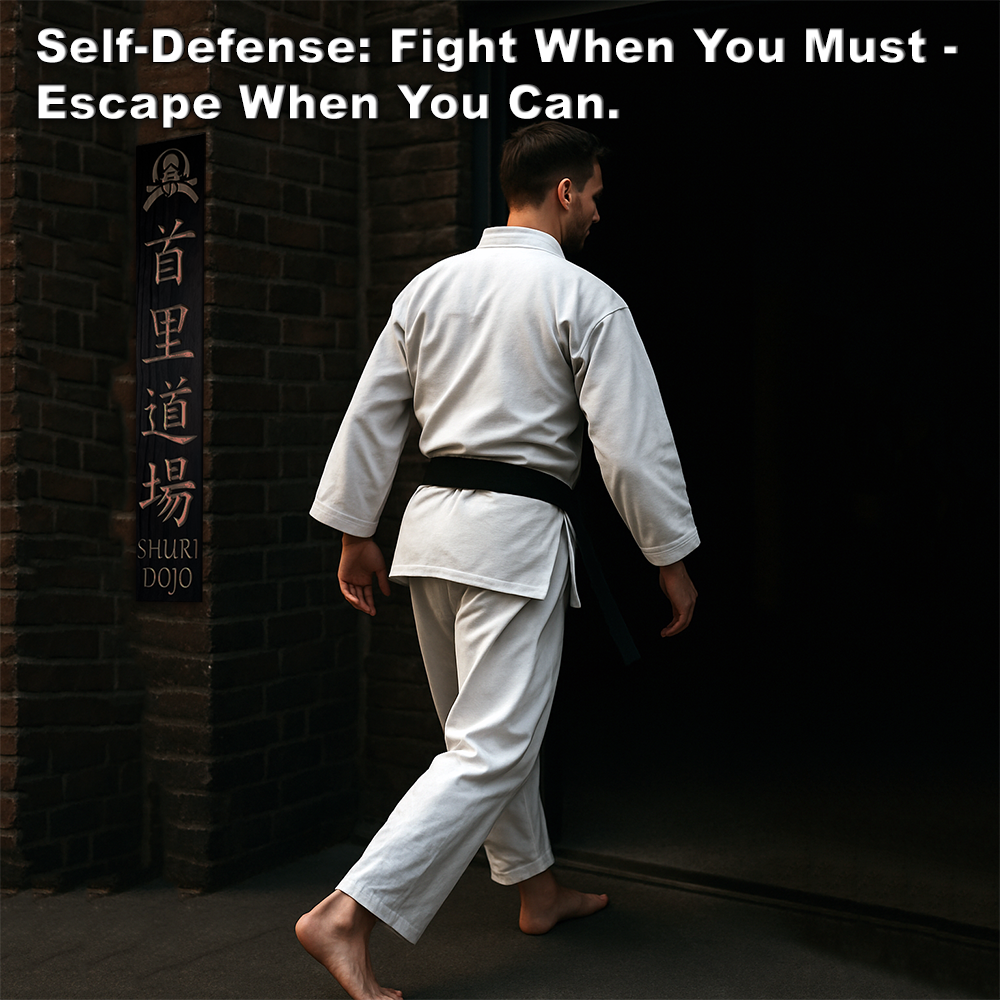
(Approx 1 minute 55 second read)
The fear of an attack can make many of you want to fight back immediately. But in the real world, the best defense often lies not in fighting it out, but in cultivating other tactics.
.
Many people send me videos to comment on – usually it’s some guy slogging it out, trying to fight his way out of a scenario that could have been avoided.
.
Physical self-defense training is crucial, and that’s why most of us practice some form of martial art, right? But our training should also focus on skills that help prevent violence altogether.
.
However, if you have no option but to fight, you need to do what you have to and then get the heck out of there. What you don’t want to do is square up to the other guy toe-to-toe, wanting an exchange like you have in the dojo.
.
Escape strategies are equally as important as fighting. Practicing ways to remove yourself and others from danger is just as essential as honing your fighting skills.
.
As an example: whenever you practice bunkai applications, or any kind of realistic drill, once you have performed your neatly created application, instead of standing there waiting for another attack, practice getting out of there. Escape.
.
Move off, back away, a quick sprint, look for places that will give you cover – of course it may not be realistic in the sense that you have a vehicle to hide behind, but you can create the mindset of “I have to get out of here” not one which says “let’s fight some more.”
.
The issue arises when people adopt a fighter’s mentality in a self-defense situation. I know several instructors who teach fighting and that’s it, yet label it as self-defense.
.
Your training should equip you with the skills and knowledge to navigate potentially dangerous situations. This means prioritizing your safety and well-being, not emerging victorious from a street fight.
.
We all learn, and some of us teach, many aspects of fighting, but understanding that it’s a last resort – that it’s not consensual as it is in the dojo – this is what many just don’t understand.
.
We analyze our kata, the bunkai, come up with applications, practice the two-person drills – what for? The answer is not to fight, but to escape, to get home safely.
.
It’s easy to look tough throwing punches and kicks. What’s harder is having the discipline to know when not to fight. If your training doesn’t end with you getting out safely, maybe you’re not training self-defense at all – you’re just fighting for the sake of fighting. And that’s not what real self-protection is about.
.
.
Written by Adam Carter – Shuri Dojo
